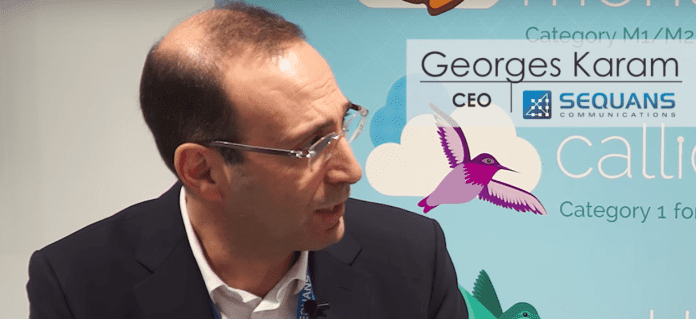The intersection of LTE and the internet of things has the potential to be a major market, and no one is more aware of that than Georges Karam. Karam founded chipmaker Sequans Communications in 2003, and for the past several years the company has been focused on LTE modem chips. Sequans is not a big supplier to smartphone makers; instead the company concentrates on the narrowband LTE technologies recently standardized to support internet of things devices like asset trackers, smart meters and wearables.
Sequans’ biggest competitor in this market is Qualcomm, the leading maker of modems and processors for smartphones and tablets. Karam sees his company’s narrow focus as an advantage in competing against the San Diego chip giant. But at the same time, he is following Qualcomm’s lead by integrating his company’s flagship modem with other chips to create systems-on-chip.
Sequans’ Monarch SX chipset combines the company’s LTE Category M1/narrowband IoT modem with an ARM Cortex-M4 processor, a sensor hub, a graphics processor and a media engine. Karam said the target market is engineers who are designing new connected devices that can use cellular networks. He is particularly hopeful about wearables, which he says could take off in a new way now that LTE subscribers will be able to receive calls and texts on wearable devices, without carrying their smartphones.
“When you think about the wearable market, it’s a big market today, but still stuck with the Bluetooth connectivity,” Karam said. “You need to keep your phone next to you.” Karam thinks many new applications will develop as wearable devices that can receive calls and texts over LTE hit the market.
For Sequans, the roadmap has two distinct directions, Karam said. The first goal is to continue to support 3GPP standards, and to improve upon the flagship Monarch chipset, which supports both LTE Category 1 and narrowband IoT.
“We have Monarch and we want to get Monarch 2,” Karam said. “Nothing [is] public yet, but obviously it is all about more integration, more power consumption optimization, more cost optimization.
Karam said the second major goal is to “expand the footprint,” meaning that he wants to bundle more chips with the Monarch modems, making Sequans a one stop shop for IoT device designers.
Partnerships with IoT module makers are also a key part of Sequans’ go-to-market strategy, and here Karam definitely finds his company racing neck-and-neck with Qualcomm. Both companies have dual-mode Cat M1/NB-IoT modems, and both are working closely with module makers who create pre-certified chipsets to connect devices to carrier networks.
“We have today more than ten module makers designing with Sequans,” Karam said. “Obviously some of them are more advanced and they have the product certified, [and] some are in the certification process.” Of Sequans’ ten module partners, eight are publicly announced.

